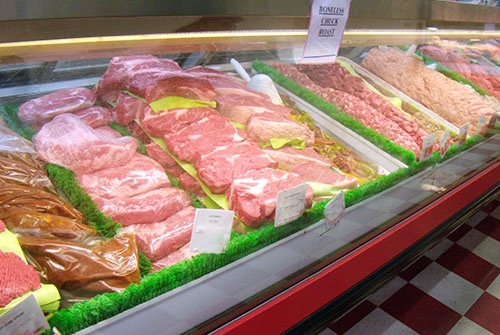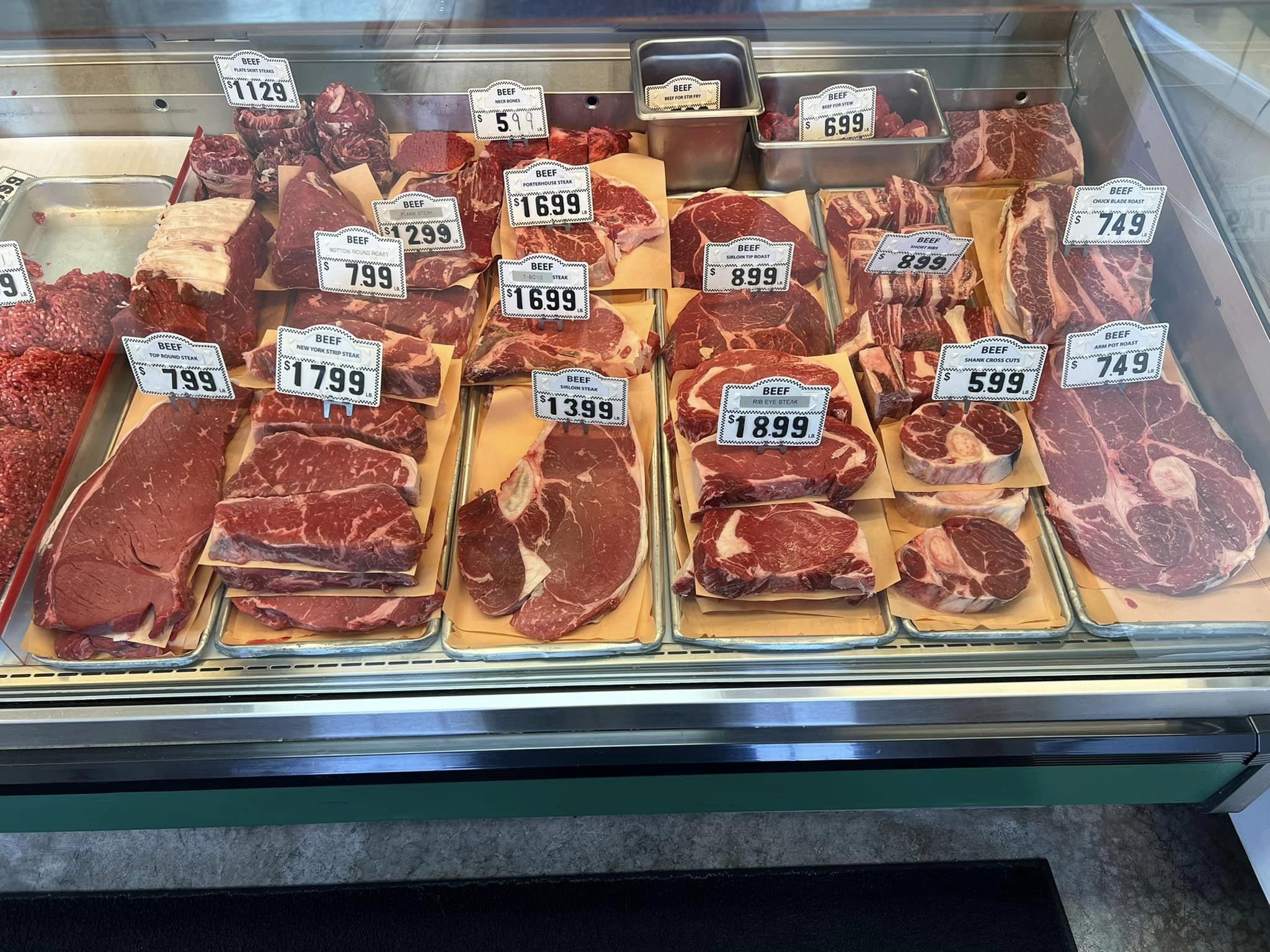What Makes Bagley Farms Meat Market Edwardsville IL Attract Attention for Meat Lovers
What Makes Bagley Farms Meat Market Edwardsville IL Attract Attention for Meat Lovers
Blog Article
Reveal the Art of the Butcher's Cut in a Modern Meat Market
In the ever-evolving landscape of contemporary meat markets, the butcher's cut has transcended its conventional origins, merging olden workmanship with modern practices. What genuinely establishes the modern butcher apart is their capacity to build a deeper link in between customers and the origins of their meat.
Advancement of Butchery Techniques

The mid-20th century saw butchery strategies additionally fine-tuned by clinical insights right into muscle mass biology and meat aging, boosting both tenderness and preference. Advancements like vacuum cleaner packaging and refrigeration extended product shelf-life, allowing butchers to diversify offerings and enhance top quality control. This duration likewise marked the increase of customized devices, such as band saws and meat slicers, which raised precision and effectiveness in meat handling.
The 21st century has actually introduced digital technology right into the butchery realm. Computerized systems currently aid in tracking pet provenance and maximizing cuts to fulfill certain customer choices. In addition, a revival in artisanal butchery has emerged, blending typical skills with modern-day knowledge to satisfy customers seeking ethical and lasting meat options. This development highlights a dynamic interplay in between practice and advancement, conference contemporary needs while maintaining the craft's heritage.

Understanding Meat Cuts

Understanding the details of meat cuts is vital for both butchers and consumers looking for top quality and value. For butchers, specific cuts mirror skill and respect for the craft, making certain minimal waste and optimum return.
The key classifications of meat cuts consist of primal, sub-primal, and retail cuts. Butchers then damage these down further into sub-primal cuts, prior to finally generating retail cuts offered to customers, like ribeye or tenderloin.
Comprehending muscle mass structure is critical; muscle mass used more frequently by the pet tend to be tougher and are best matched for slow cooking methods, while less-used muscular tissues, like those located in the loin, are more tender and ideal for cooking or roasting. Knowledge with these distinctions encourages customers to make educated choices, enhancing their cooking endeavors.
Selecting High Quality Meat
Picking the ideal meat includes greater than just picking an aesthetically attractive piece from the screen. The art of choosing top quality meat requires a discerning eye and expertise of certain attributes that represent quality and quality. Pay interest to the color; beef should have an intense, cherry-red shade, while lamb ought to show a soft pink tone, and pork a light pink. This shows the meat is fresh and hasn't been revealed to oxygen for too lengthy.
Secondly, consider the marbling, which refers to the white flecks of fat within the muscle. Proper marbling is a key click resources sign of inflammation and flavor, have a peek at this website as it thaws during food preparation, improving the meat's juiciness. Keep in mind, higher marbling usually associates with superior quality cuts, such as USDA Prime.
Structure is one more crucial aspect; meat ought to really feel strong to the touch, not slimed or overly soft. In addition, be conscious of the scent. Fresh meat needs to have a tidy, neutral scent, devoid of any sour or off-putting smells.
Combining Cuts With Food Preparation Methods
Successfully matching cuts of meat with the suitable food preparation approaches is vital for accomplishing ideal flavor and structure. Various cuts differ in tenderness, marbling, and connective cells material, each needing particular techniques to unlock their possibility. For circumstances, tender cuts like filet mignon and ribeye, with their integral marbling, gain from high-heat, quick-cooking techniques such as barbecuing or pan-searing. These techniques boost the meat's natural flavors and guarantee a juicy surface.
Conversely, harder cuts like brisket and chuck roast are rich in collagen, which breaks down right into gelatin when cooked gradually. These cuts are perfect for braising or slow-moving roasting, allowing the meat to tenderize with time and establish deep, complex tastes. Likewise, cuts such as short ribs and pork shoulder fare well with slow-cooking approaches, where prolonged cooking times transform their durable textures right into delicious meals.
Lamb shanks and oxtail, which need extended food preparation to tenderize, are sites ideal prospects for cooking or slow-moving simmering. These techniques coax out abundant, hearty flavors while keeping moisture. By understanding the distinct attributes of each cut, cooks and home chefs alike can elevate their cooking creations, guaranteeing each meal is both satisfying and remarkable.
The Butcher's Role Today
Navigating the advancing landscape of the modern-day meat market, the butcher's duty today expands beyond mere prep work of cuts. Contemporary butchers are cooking artisans, educators, and advocates for lasting practices.
Along with crafting exact cuts, butchers now involve straight with customers, providing cooking recommendations and customizing options to fit private needs and preferences. Their proficiency in meat aging, marbling, and flavor profiles empowers consumers to make educated decisions, improving their cooking experiences. This customized service exemplifies the butcher's evolving role as a relied on advisor in the kitchen area.
Moreover, butchers are essential in minimizing waste, making use of entire pets to produce varied products such as sausages and stocks - bagley farms meat market edwardsville il. This extensive technique not just values the animal but also aligns with modern sustainability goals. By doing this, the modern-day butcher symbolizes both custom and technology, adapting to an ever-changing market while preserving the virtuosity and honesty of their craft

Verdict
The contemporary butcher's craft intricately weaves typical methods with modern-day innovations, emphasizing sustainable practices and ethical sourcing. Proficiency in recognizing diverse meat cuts and quality signs empowers butchers to offer informed suggestions, aligning particular cuts with ideal cooking methods. This expertise not just boosts cooking experiences but likewise strengthens the connection in between customers and the origins of their food. By recognizing historic practices while embracing modern needs, the butcher's duty stays important in today's sophisticated meat market.
Report this page